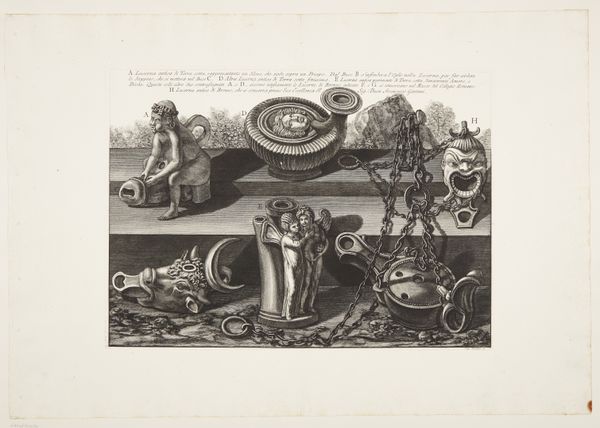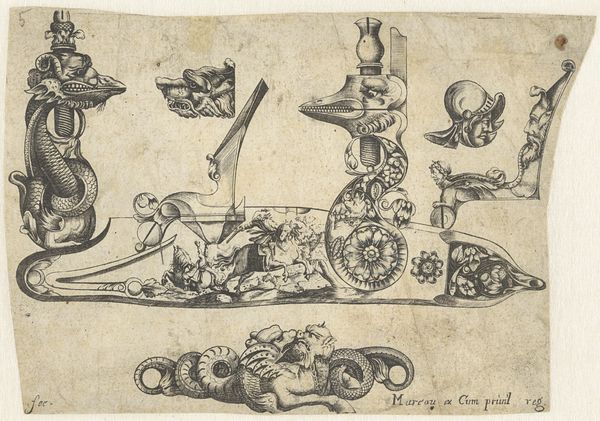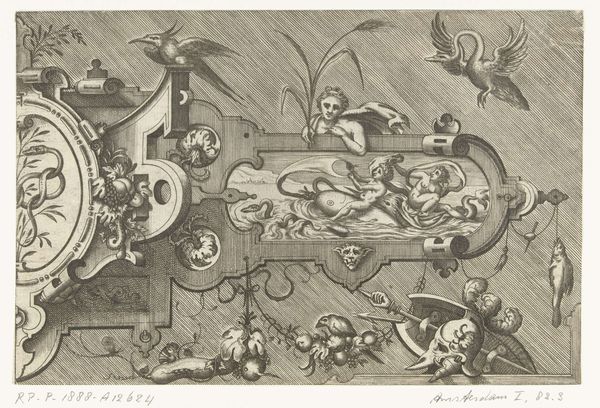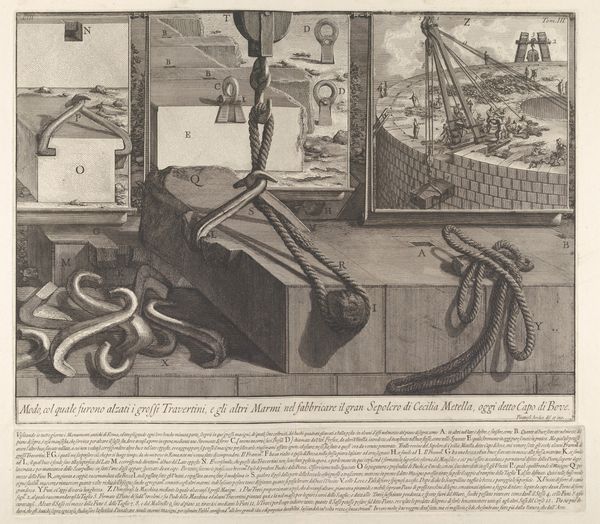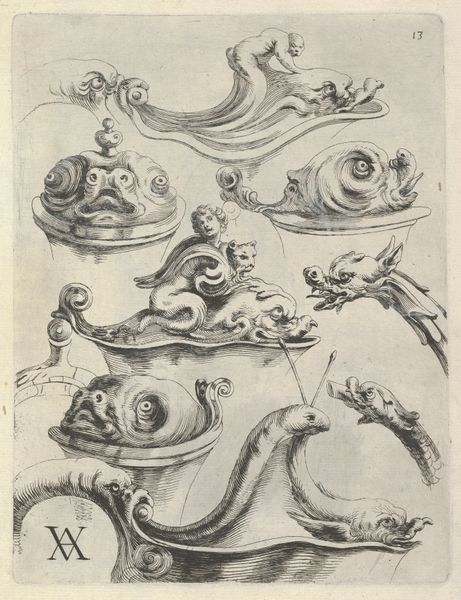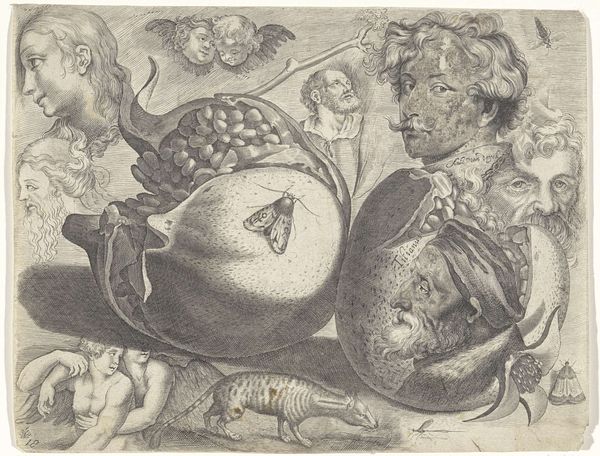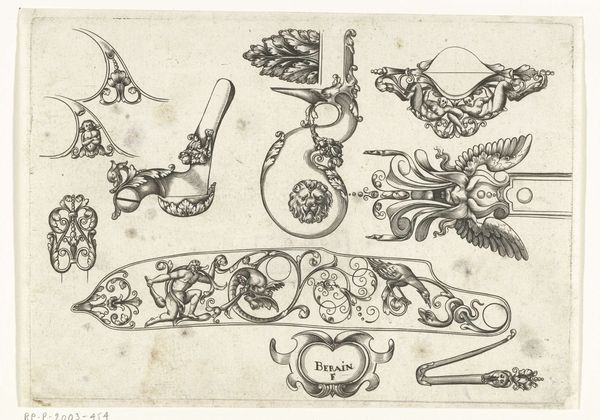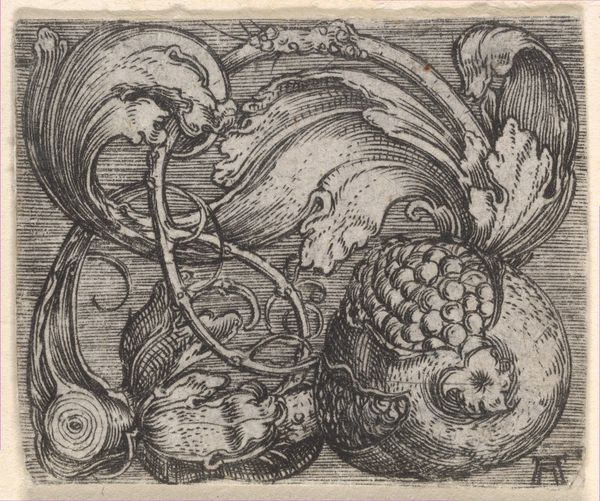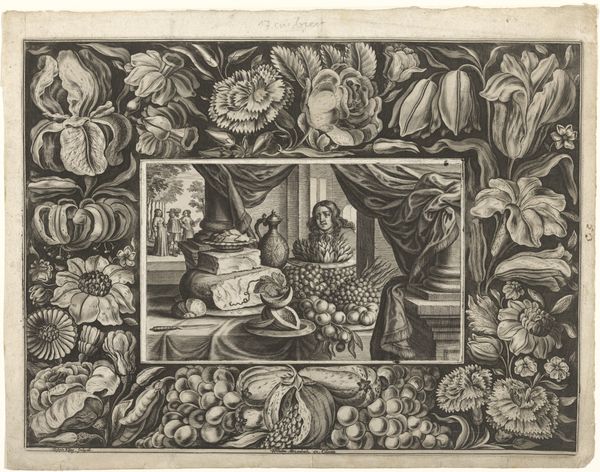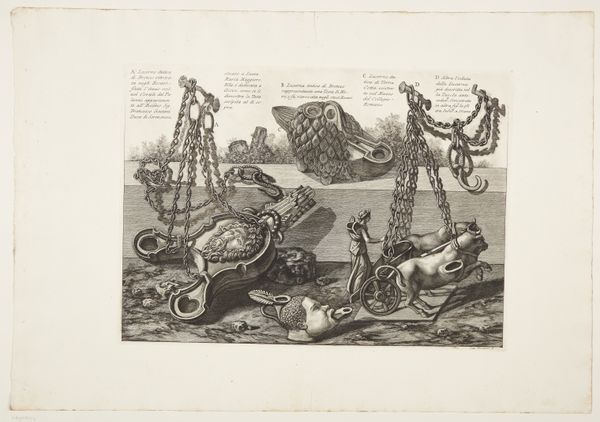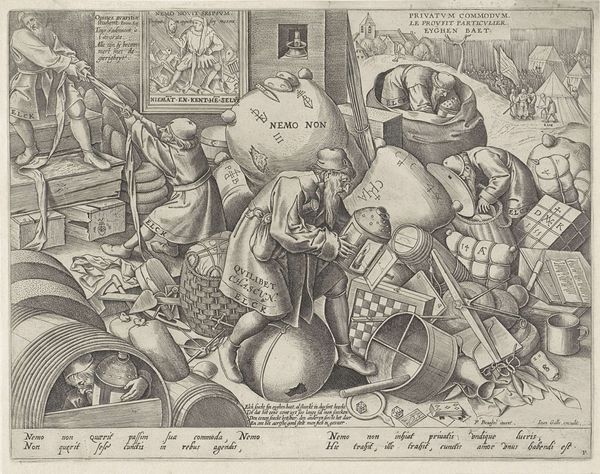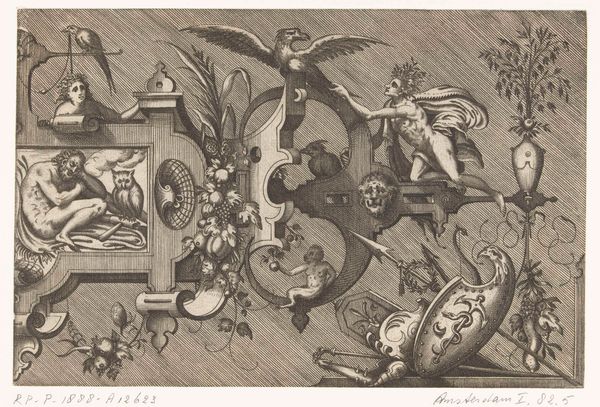
Various Lamps and a vase encusted with cameos, from Vasi, candelabri, cippi, sarcofagi, tripodi, lucerne, ed ornamenti antichi disegnati ed incisi dal Cav. Gio. Batt. Piranesi (Vases, candelabra, grave stones, sarcophagi, tripods, lamps and ornaments designed and etched by Cavaliere Giovanni Battista Piranesi) 1773 - 1783
0:00
0:00
Dimensions: Sheet: 16 1/8 x 22 5/8 in. (41 x 57.5 cm) Plate: 15 3/16 x 21 1/16 in. (38.5 x 53.5 cm)
Copyright: Public Domain
Curator: What strikes me first about this etching by Giovanni Battista Piranesi, dating from sometime between 1773 and 1783, is its somewhat eerie, almost archaeological feel. The details! The rendering of light! It’s unsettlingly beautiful. Editor: Absolutely. It's titled 'Various Lamps and a vase encusted with cameos', from his series "Vasi, candelabri, cippi, sarcofagi, tripodi, lucerne, ed ornamenti antichi disegnati ed incisi dal Cav. Gio. Batt. Piranesi," showcasing Piranesi’s dedication to documenting and reimagining Roman antiquities. I find that Piranesi’s works are significant as he brings the ancient world to life while reflecting his own contemporary political moment through neoclassical aesthetics. Curator: I agree. And note how the lamps are suspended with chains. What do they hold? Who holds them? Where are we looking from? What is illuminated? As we view the scenes depicted, there is a feeling of mystery that permeates these ornamental pieces. It is very strange. I also wonder about accessibility as only those with the financial privilege would have had the honor to possess or interact with the displayed artefacts. Editor: Exactly. These were, in many ways, trophies or declarations of Roman societal achievement and imperial ideology. Piranesi was deeply influenced by the culture industry and politics of display; these images became part of the visual vocabulary of power, reinforcing the cultural dominance that, arguably, shaped Western aesthetics. Even here the Met in New York possesses this print today. Curator: What I appreciate in his vision, specifically, is its layered interpretation of history with his sharp Baroque style. I note the ornate vase brimming with cameos, the details of the faces peering out from the vessels. What can they tell us about their own story? As we interpret it in our moment today, how might they react? It's through this exchange of theory where we situate the work and give it agency and respect as it continues to transcend and have lasting cultural capital. Editor: Well said. The engraving technique itself is remarkable. But what the plates truly reveal is Piranesi's deep understanding of architectural forms, ancient crafts, and the enduring allure of antiquity in shaping artistic movements. Piranesi created new meanings by recreating works like these. Curator: His etching breathes life into remnants of a bygone era. As pieces of cultural history, these plates serve as powerful reminders of the complex interplay between past, present, art, and power. Editor: Indeed. Through Piranesi's plates, the past resonates in ways that can speak volumes about the forces that define us.
Comments
No comments
Be the first to comment and join the conversation on the ultimate creative platform.
